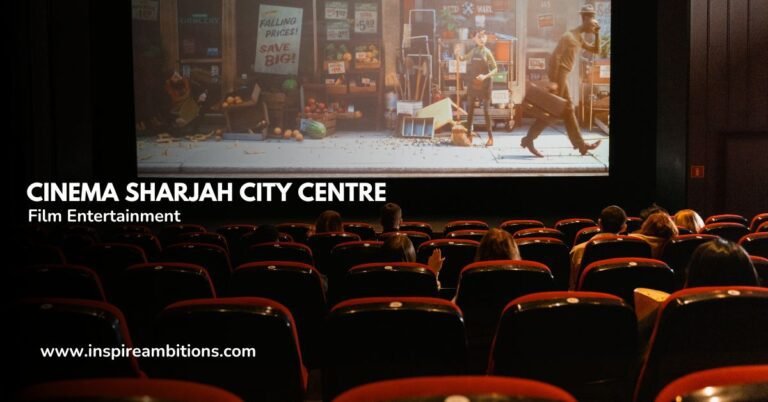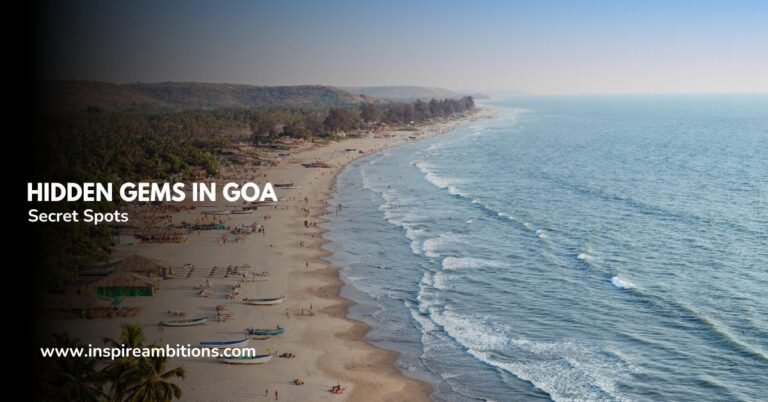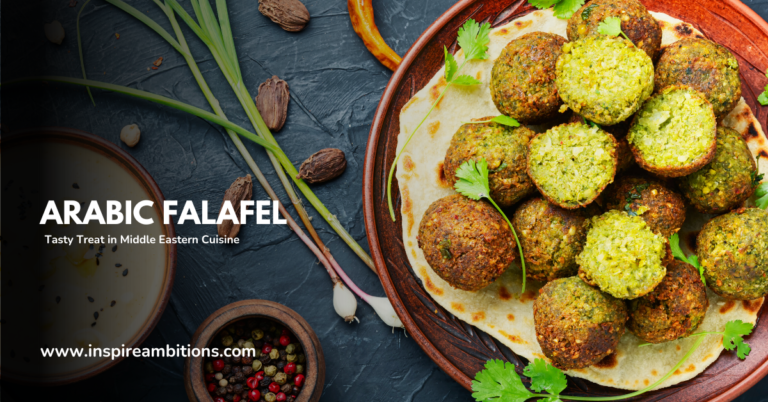دبي أسوأ وقت للزيارة – دليل احترافي للسفر خارج أوقات الذروة
Dubai’s allure as a travel destination is undeniable. However, certain times of the year could transform what is meant to be a vacation of relaxation and adventure into an experience of discomfort and limited options.
The weather in Dubai can be extreme. With its position within the Arabian Desert, the city experiences intensely hot summers that can significantly impact your travel experience.

Planning your visit is crucial, and being aware of the times to avoid can save you from the disappointment of closed attractions and oppressive heat.
Consideration of local events is also essential. For example, the observance of Ramadan could alter the availability of dining and entertainment.
Similarly, peak tourist seasons could affect accommodation prices and crowd levels, potentially overstretching your budget and challenging your tolerance for bustling environments.
Dubai Worst Time to Visit – Key Takeaways
- Identifying the less favourable visit can enhance your overall experience in Dubai.
- Weather and cultural events play a significant role in the quality and comfort of your stay.
- Understanding seasonal trends helps in budgeting and adjusting travel plans for optimal enjoyment.
Understanding Dubai’s Climate
When planning your trip to Dubai, it’s essential to consider the emirate’s distinct climate, characterized by desert conditions with extreme variations in temperature and humidity.
Summer Heat and Humidity
During the summer months, from June to August, دبي خبرة high temperatures that commonly exceed 40°C (104°F). The طقس can feel even more intense due to high humidity levels. These conditions are typical for a desert climate.
While hotels are well equipped with air conditioning, outdoor activities can be challenging during this period. Venturing outside means preparing for the sweltering heat, which, at times, can increase the risk of heat-related illnesses.
Winter in Dubai
Contrasting the intense summer, شتاء in Dubai boasts درجات حرارة أكثر اعتدالا. The weather becomes more tolerable between November and March, with temperatures ranging from 20 to 30°C (upper-70s to mid-80°F). This milder climate allows a comfortable exploration of the city and its attractions.
Many visitors prefer this season for their stay in Dubai, which can result in higher الفندق prices and larger crowds.
The High Season Vs. Low Season Dynamic
When planning a visit to Dubai, understanding the fluctuation between high and low seasons is crucial for a satisfactory experience: this dynamic influences not just crowds and expenses but also accommodations and available activities.
Tourist Crowds and Prices
ال peak period, typically between November and March, sees Dubai teeming with tourists. Pleasant weather attracts visitors, resulting in crowded attractions and higher prices. Events and festivals surge during this span, offering cultural experiences and reducing congestion.
In contrast, the cheapest time to visit is during the low season, which aligns with the sweltering heat from June to August. Tourist numbers drop sharply, as do the prices, making it an economically attractive, albeit less comfortable, time to travel.
Events and Festivals
Dubai’s high season has exciting events like the Dubai Shopping Festival and Dubai Jazz Festival. The choice to visit during these high-energy times should be weighed against the possibility of overwhelming crowds and escalated costs.
ال shoulder season, which flanks the high and low periods, provides a compromise with fewer tourists and moderate hotel rates. Significant religious observances like Ramadan in Dubai fall within this span, potentially affecting the availability of festivals and routine entertainment.
Hotel Rates Fluctuation
Hotel rates peak concurrently with tourist influx during the high season. Booking accommodations well in advance is advisable to mitigate the cost.
Alternatively, the low season can offer significant discounts, making luxury hotels more accessible. But consider the fervid climate, which might restrict outdoor activities.
Remember that hotels might offer competitive rates or packages during the shoulder season, allowing you to enjoy a balance of cost, climate, and crowd control.
Identifying Months to Avoid
متى التخطيط لرحلتك إلى دبي, knowing when not to visit is as essential as picking the ideal travel dates. Dubai’s year can be broadly divided into the cooler months and the extreme heat التابع summer months. Recognizing which months to avoid can enhance your travel experience.
Summer (June to August): These are the hottest months in Dubai, where temperatures can soar to over 48 degrees Celsius (118 degrees Fahrenheit). Outdoor activities during this time can be highly uncomfortable, if not dangerous, due to the extreme heat. If you’re not a fan of relentless sun and high temperatures, it’s best to skip these months.
Late Summer (September): While September marks the end of the peak summer season, temperatures are still high, coupled with increased humidity levels, making sightseeing quite challenging.
- Ramadan: It’s essential to consider the Islamic month of Ramadan, which varies yearly. During this period, many restaurants are closed during daylight hours, and the pace of life in Dubai slows down significantly.
| Period | Temperature Range | اعتبارات |
|---|---|---|
| June to August (Summer) | Above 48°C (118°F) | Extreme heat, challenging for outdoor activities. |
| سبتمبر | Slightly cooler but humid | Persistent heat with increasing humidity. |
| Ramadan (dates vary) | Variable | Altered dining options and a slower pace of daily life. |
Ramadan’s Impact on Travel
The arrival of رمضان in Dubai significantly alters the daily rhythms of this bustling metropolis. As a revered cultural and religious period in the الإمارات العربية المتحدة, Ramadan sees the Muslim community fasting from dawn to dusk, focusing on spirituality, reflection, and community.
- الاعتبارات الثقافية: During Ramadan, Muslims abstain from eating, drinking, and smoking in public during daylight hours, and as a visitor, you’re expected to respect these customs.
- التسوق وتناول الطعام: Many restaurants and shops may alter their hours, opening later and staying open well into the night. Expect a more subdued atmosphere by day but a vibrant scene post-sunset as iftars begin.
Traveling During Ramadan:
- Mornings tend to be quieter, which might be pleasant for sightseeing without the usual crowds.
- Evening hours come to life مع traditional meals and festivities, offering a unique cultural experience.
Dubai Food Festival:
- While daytime food options are limited, the festival often coincides with Ramadan, allowing you to indulge in culinary delights at night.
Ramadan Etiquettes for Tourists:
- Dress conservatively out of respect for local culture.
- Avoid eating, drinking, or smoking publicly during fasting hours.
Travel Discomfort and Health Hazards
In the peak summer months, Dubai’s extreme temperatures pose significant health risks, such as heat-related illnesses and dehydration, which can lead to severe discomfort and emergencies if proper precautions are not taken.
Heat-Related Illnesses
Dubai’s soaring summer temperatures often exceed 40°C (104°F), placing you at a higher risk of heat exhaustion و heatstroke.
Heat exhaustion occurs when your body overheats and can manifest as muscle cramps, weakness, dizziness, headache, nausea or vomiting, and excessive sweating. Without prompt intervention, it may escalate to heatstroke, a medical emergency where the body temperature exceeds 40°C (104°F), potentially causing rapid heartbeat, confusion, agitation, seizure, and loss of consciousness.
Necessary Precautions to Stay Hydrated
Staying hydrated in Dubai’s intense heat is critical. You must drink plenty of liquids, preferably water, to replenish fluids lost through sweat.
Carrying a زجاجة ماء ensures you can frequently hydrate, aiming for at least 2 litres daily.
Avoiding diuretic drinks such as coffee and alcohol can also help maintain hydration levels.
Wear lightweight and loose-fitting clothing to facilitate sweat evaporation and aid body cooling.
To avoid the risk of dehydration, seek shade and rest during the hottest parts of the day, especially if you start experiencing symptoms of heat-related illnesses.
Activities and Accessibility
When planning your visit to Dubai, it’s essential to consider the timings concerning outdoor and indoor activities based on the city’s extreme weather conditions.
مغامرات في الهواء الطلق
In Dubai, the scorching heat often peaks during the summer months. The average high temperatures reach 106°F and can soar even higher, making outdoor activities like beach visits or desert safaris challenging.
Plan any outdoor adventure early or later in the evening to avoid the oppressive midday sun.
Despite the heat, outdoor attractions such as the حديقة دبي المعجزة transform the desert landscape into a colourful floral wonderland. This attraction is best experienced outside the June-August window.
Indoor Attractions and Shopping
Dubai offers many indoor attractions, including the famous Dubai Mall, to escape the heat. You can combine leisure with pleasure here by indulging in the مهرجان دبي للتسوق.
This city-wide event happens in winter, an ideal time to visit as it ensures comfort while hopping between shopping, sightseeing, and enjoying indoor activities like the Museum of Illusions.
Bold initiatives like cooled shopping walkways make التسوق و معالم المدينة feasible even when the mercury rises.
Dubai’s Cultural and Entertainment Events
When planning your visit to Dubai, you might want to consider the array of cultural and entertainment events the city offers. These events showcase Dubai’s rich tapestry of heritage and modernity.
Al Marmoom Heritage Festival
This cultural event celebrates the التقاليد الإماراتية مع سباق الهجن, a sport deeply embedded in the UAE’s history. Visitors experience the excitement and learn about the significance of camels in UAE culture.
Dubai Food Festival
Food enthusiasts should not miss the Dubai Food Festival, an annual culinary celebration. It features everything from gourmet dining to local street food, demonstrating Dubai’s diverse and vibrant food scene.
Shopping and Festivals
Dubai is renowned for its shopping experiences, boasting an extensive range of luxury stores and malls. You’ll find live concerts, fashion shows, and exclusive deals across the city during the Dubai Shopping Festival.
Entertainment Events
- Music and Film Festivals: Dubai hosts several international festivals showcasing global music and cinema that can enhance your cultural experience.
- Art Exhibitions: The city’s art galleries and events like Art Dubai spotlight regional and international artists, perfect for art lovers.
Pricing Trends for Flights and Accommodations
When planning your trip to Dubai, it’s pivotal to consider how fluctuating hotel rates and flight الأسعار can affect your تجربة السفر. Understanding these trends lets you gauge the most cost-effective time to visit this vibrant city.
Hotels in Dubai:
During peak tourist seasons, mainly between November and March, hotel rates surge due to high demand.
على سبيل المثال، prestigious accommodations مثل ال أتلانتس النخلة in December can cost $850 per night.
Conversely, rates can drop significantly during the sweltering summer months, with some hotels offering rooms at less than half the peak season price.
Flights to Dubai:
Like hotels, flight prices tend to increase during the high season and dip during the summer. Additionally, booking flights well in advance often secures better rates.
Here’s a brief overview:
| Season | Hotel Rates | Flight Prices |
|---|---|---|
| High | $$$ (High) | $$$ (Expensive) |
| Low | $ (Budget-friendly) | $ (Affordable) |
You might find budget-friendly options for accommodations and flights during the April to October window when the climate is hottest, and tourist traffic is low, as noted by CreativeBooster.
Preparation and When to Book
متى التخطيط لرحلة to Dubai, understanding the seasonal fluctuations in tourist traffic and hotel rates can profoundly affect your experience and budget. Booking at the strategic times for your itinerary can help ensure a seamless travel experience.
التخطيط لمسار رحلتك
Begin creating your itinerary by pinpointing the landmarks and experiences you want to see and do in Dubai.
If you aim to visit during the أرخص وقت, this often coincides with the hotter months, where outdoor activities might be less comfortable. Considering this, craft your itinerary with indoor activities during peak heat hours.
Securing the Best Deals on Accommodations
To secure the best deals on accommodations, monitor hotel rates and book well in advance.
During the less crowded periods, hotels may offer more competitive rates; however, these are also the worst times to visit weather-wise.
Utilize travel comparison sites to watch for rate changes and consider booking during a slight off-peak to balance comfort with the economy.
Closing Thoughts
In considering when to visit Dubai, it’s essential to weigh the pros and cons of the season.
ال summer months – specifically يونيو ويوليو وأغسطس – are often considered the worst time to visit Dubai due to the intense heat and humidity. Daytime temperatures can soar, making outdoor activities challenging.
على العكس من ذلك، planning your travel during the more temperate months will enhance your overall تجربة السفر.
In contrast, the cooler period from November to March is often cited as the أفضل وقت للزيارة to explore the city’s attractions comfortably.
If you want to avoid the discomfort of high temperatures and the inconveniences of crowded spaces, steer clear of Dubai’s summer months and peak holiday weeks around Christmas and New Year, which see an influx of tourists.
Here is a concise breakdown to consider for your travel:
- Avoid June to August For less oppressive heat.
- Consider Alternatives: Cooler months offer better conditions for sightseeing and exploration.
Remember to account for personal preferences and thresholds for heat when scheduling your trip.






